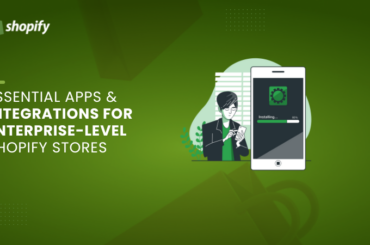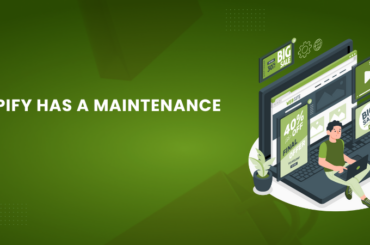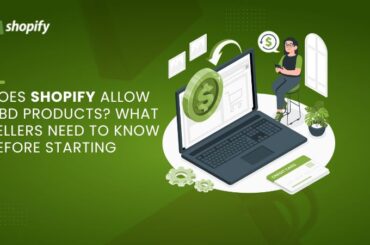Shopify Integration with QuickBooks—How to integrate Shopify with QuickBooks?
Last Updated | September 9, 2024
Table of Contents
Shopify Integration with QuickBooks
The integration of Shopify and QuickBooks has become a hot topic among businesses. Many are curious about its specifics, importance, and advantages. Questions about reconciling Shopify and QuickBooks data, as well as the best starting point for integration, are common.
Folio3, your trusted eCommerce development partner, provides expert solutions for Shopify and QuickBooks integration, including essential QuickBooks ecommerce integration.
How to Integrate Shopify and Quickbooks
Inside QuickBooks, you can set up programmed compromise by finishing the accompanying advances:
- Select Tools from the Settings menu and select Reconcile, and afterward, begin reconciling.
- Select the proper bank account; Information will show up as indicated by the account type.
- Enter the proper Ending Date, per the last time the record was reconciled.
- Follow prompts for extra information whenever mentioned.
- Contrast exchanges with the bank or financial records.
While reconciling, you can set QuickBooks to just show Payments or Deposits, which creates an amalgam of information for a simpler view to analyze against your statements.
You can likewise physically alter any exchanges that aren’t right. Whenever you’ve inspected your exchanges and articulations, select ‘Finish Now’ and follow the prompts to save and view your reconciled report.
How to Integrate Shopify With QuickBooks Online?
Here’s a brief guide for integrating Shopify with QuickBooks Online:
- Install the QuickBooks App: In Shopify, download and install the QuickBooks app.
- Authorize Connection: Click “Add App,” then “Install App.” Follow prompts to authorize the connection between Shopify and QuickBooks.
- Payment Options: Choose your preferred payment option.
- Accept Terms: Agree to all terms and conditions.
- Connect to QuickBooks: Click the link to connect with QuickBooks. In the new window, authorize data sharing and click “Connect.”
- Configure Settings:
- Payment Charge Settings: Set up your payment charge options.
- Tax Settings: Configure tax settings (ensure taxes are set up in QuickBooks beforehand).
- Product Export Settings: Define how products are exported.
- Customer Export Settings: Set up customer data export.
- Finalize: Choose your price plan, adjust export settings, and click ‘Complete setup.’
- Verify Integration: Open QuickBooks and check the integration in the company setup overview tab.
Your Shopify is now integrated with QuickBooks Online! Enjoy seamless inventory management and business growth.
How to Integrate Shopify with Quickbooks Desktop
To integrate Shopify with QuickBooks Desktop, you can follow these steps. This will help you sync sales, inventory, and customer data from Shopify to your QuickBooks Desktop, simplifying your accounting and bookkeeping. Here’s an easy step-by-step guide:
Step 1: Prepare your QuickBooks Desktop
- Open QuickBooks Desktop: Ensure your QuickBooks Desktop is installed and set up.
- Backup Your Data: It’s always a good idea to back up your QuickBooks data before making major changes. Go to File > Back Up Company > Create Local Backup.
Step 2: Choose an Integration App
- Pick a Third-Party App: Shopify does not directly integrate with QuickBooks Desktop, so you’ll need a third-party app. Some popular ones are:
- QuickBooks Desktop Connector by Webgility
- Connex for QuickBooks
- A2X for Shopify
- Sign Up: Go to the chosen app’s website and create an account. Most of these services offer a free trial, so you can test if it meets your needs.
Step 3: Connect Shopify to the Integration App
- Install the App: Follow the app instructions to install it.
- Connect Shopify: In the app’s dashboard, there will be an option to connect your Shopify store. You’ll likely need to:
- Log into your Shopify account.
- Grant permission to the app to access your Shopify data.
Step 4: Connect QuickBooks Desktop to the Integration App
- Download the QuickBooks Web Connector: Some apps, like Webgility, require the QuickBooks Web Connector to sync data between Shopify and QuickBooks. Install it if necessary.
- Connect QuickBooks Desktop: The app will guide you through linking QuickBooks Desktop to the integration tool. This might include:
- Opening QuickBooks Desktop.
- Authorizing the connection between the app and QuickBooks.
Step 5: Configure Sync Settings
- Customize What to Sync: Once Shopify and QuickBooks are connected, you can choose what data to sync:
- Sales Orders
- Inventory Levels
- Customer Information
- Set Sync Frequency: You can often set how frequently the sync occurs (daily, weekly, etc.).
Step 6: Test the Integration
- Perform a Test Sync: Try syncing a few transactions from Shopify to QuickBooks to ensure everything works smoothly.
- Check QuickBooks: After the sync, open QuickBooks Desktop to confirm that the Shopify data (e.g., sales) is showing up correctly.
Step 7: Monitor and Maintain
- Regular Syncs: Ensure that the app regularly syncs data. Some apps allow automatic syncing, while others require manual syncs.
- Review Reports: Periodically review your reports in QuickBooks Desktop to ensure that everything is correct.
Why do I need QuickBooks with Shopify?
If you’re thinking about Shopify integration with QuickBooks, here are some key benefits you need to keep in mind.
There are many advantages to coordinating Shopify with QuickBooks. Nonetheless, the fundamental benefits of any mechanization are that it guarantees precision and effectiveness and enhances your opportunity to zero in on the basic parts of your online business.
Connecting Shopify to QuickBooks: A Seamless Integration
While Shopify and QuickBooks are distinct platforms, their integration is crucial for efficient eCommerce management. Synchronizing these two systems is essential for accurate financial reconciliation.
Imagine running a successful online business with disconnected accounting processes. Manual data transfer is time-consuming, costly, and error-prone. This is where QuickBooks ecommerce integration shines. By connecting Shopify to QuickBooks, businesses can streamline operations and achieve accurate financial reporting.
How to add Shopify to QuickBooks – Keep Your Accounting Accurate
As you probably won’t think about it, great accountancy will keep your store user-friendly— something that is valid when good ties are being maintained with specialists and compliance officers, and much more.
According to our Shopify website design company, accountancy will be firmly planted with your own store in a way approach to give you exact and keep you stay constantly updated with the wellspring of information. Moreover, it can lessen your work and time with compromises in your QuickBooks.
How To Record Shopify Sales In QuickBooks?
Here a few simple steps to add the record sales and connect Shopify to QuickBooks online
Step #1 – Launch Shopify’s Payout Report
1. You will start by looking for payouts on the Shopify main screen. You must scroll down, then glance to your right to discover the payout schedule, and finally choose to view all payouts.
2. The payouts are then shown in chronological order according to the payout date.
3. Choose a specific date next to see that payout in greater detail.
Step #2 – Run The Shopify Finances Summary Report In Step Two
1. Next, from Shopify, select Reports. Then, when you reach Finances, scroll down and select Finances Summary.
We’ll see the Finances report, which displays sales, liabilities, and payments, after entering the date range. Now, keep in mind that the amount received in the bank account and the amount listed on the financial report may differ.
The overall Shopify payments, less fees, plus or minus adjustments, make up the Shopify payout amount. You actually see that in your bank account as your reward.
This is when things can become a little confusing. To enter the money into QBO, you must make a few modifications. So how do you record all of that in a journal entry? Let’s look at it.
Step #3 – In QuickBooks Online, Create A Journal Entry To Capture Information About Shopify Sales
The first collection of transactions—sales revenue, discounts, shipping revenue, sales tax payments, and Shopify fees—is what I selected for the example below from the Finances report (from Step 2 above). The Shopify clearance amount was also added to my collection from the Payout report (from Step 1 above). This represents the amount that Shopify clearing actually placed into the bank account.
Step #4 – List Alternative Payment Processors Than Amazon.Com
You can accept payments from Shopify Payments, PayPal, Amazon, and other payment processors using Shopify. This is where things become really complex because the data we can immediately access from Shopify relates just to Shopify payments. We must obtain PayPal and Amazon fees exclusively from those payment processors since Shopify is unable to collect them for us.
The primary factor to keep in mind is that there are several moving parts and locations where you must collect income, levies, and fees for every payment processor.
Ultimately, all of that data must transfer to QuickBooks and be able to match the sums you’re getting into your account.
Integrating QuickBooks with Shopify – Get a true view of business
You should remember that precise, alongside updated information, is incredibly crucial to your choices regarding scaling your business. You can, in some cases, wonder about how to go about designing your products, storefront as well as sales in case you are aware of the number of items left in your inventory or how you can plan your taxes when your sales aren’t sorted in a timely manner.
With QuickBooks and Shopify integration, a source of information will display the entirety of the truth of your own business.
Also, under the era of incredible AI algorithms, a total and appropriate source of information can be entirely as important as you owning powerful business intelligence tools.
Understanding Financial Reports with Shopify and QuickBooks Integration
- Balance Sheet: A strong Shopify and QuickBooks integration is crucial for accurate financial reporting. By connecting your eCommerce platform with your accounting software, you can efficiently manage your business finances. Key financial reports like the balance sheet and income statement become more accessible and informative.
- Income Statement: The balance sheet outlines your business’s financial health, showcasing assets, liabilities, and owner’s equity. Your inventory and cash flow are essential components of this report. The income statement provides a snapshot of your business’s profitability over a specific period, recording sales, expenses, and net income.
- Cash Flow Statement: For a comprehensive financial overview, the cash flow statement is indispensable. This report tracks the inflow and outflow of cash, offering insights into your business’s liquidity. By effectively managing these financial reports through a seamless Shopify and QuickBooks integration, you can make informed decisions to drive business growth.
In the event that you’ve never reconciled your Shopify sales, or whether it has been a while since you’ve experienced the process, our Shopify developers USA recommend starting with your most established bank proclamation—or the first since you accommodated last—and work during each time until you’re up to speed.
Beginning at the absolute starting point is your best opportunity to discover blunders and errors.
A cloud-based Shopify accountancy programming like QuickBooks can assist you with reconciling quicker via automatically downloading information about your sales and introducing it for examination against your bank or financial records.
Is Shopify compatible with QuickBooks?
QuickBooks Integration for Shopify
QuickBooks for Shopify enables seamless transfer of Shopify sales data to QuickBooks, streamlining e-commerce and accounting. Here’s a summary of the integration methods and features:
Integration Methods
- QuickBooks Online: Direct integration for syncing sales, expenses, taxes, and financial data.
- QuickBooks Desktop: Integration via third-party apps (e.g., Webgility, Connex).
Optimizing Your Business with Shopify and QuickBooks Integration
Harnessing the power of a robust Shopify and QuickBooks integration is essential for modern businesses. By seamlessly connecting your eCommerce platform with your accounting software, you can streamline operations, enhance efficiency, and make data-driven decisions.
Key Features of a Comprehensive Integration
A strong Shopify QuickBooks integration offers several key advantages:
- Automatic Data Sync: Effortlessly synchronize sales, refunds, and taxes between Shopify and QuickBooks.
- Inventory Management: Maintain accurate inventory levels in real-time across both platforms.
- Tax Calculation: Ensure precise tax reporting and compliance.
- Customer Management: Sync customer information for a unified view of your customer base.
- Financial Reporting: Generate comprehensive financial reports by integrating eCommerce sales data into QuickBooks.
- Multi-Channel Sales: Consolidate sales data from various platforms, including Amazon and eBay, into a single location.
Beyond the Basics: Advanced Integration Options
To maximize the benefits of your Shopify QuickBooks integration, explore advanced features:
- Exporting Shopify Data: Efficiently transfer Shopify orders, charges, and payouts to QuickBooks for accurate accounting.
- Shopify QuickBooks Enterprise Integration: For larger businesses, consider enterprise-level integration solutions to handle complex accounting needs.
- Shopify QuickBooks Desktop Integration: Connect your Shopify store to QuickBooks Desktop for seamless financial management.
- How to Sync Shopify with QuickBooks Desktop: Leverage third-party apps or custom integrations to synchronize data between these platforms.
- Does Shopify Integrate with QuickBooks? Yes, Shopify offers integration options with both QuickBooks Online and QuickBooks Desktop.
- QuickBooks Shopify Integration: Streamline your accounting processes by connecting your eCommerce platform with QuickBooks.
- Shopify QuickBooks Online Integration: Enjoy seamless integration between Shopify and QuickBooks Online for efficient financial management.
- Shopify QBO Integration: Utilize the power of Shopify and QuickBooks Online together for optimal business performance.
- Shopify Connector by Intuit: Leverage the official Shopify Connector by Intuit for a reliable and efficient integration.
By understanding these key features and exploring advanced integration options, you can optimize your business operations and make informed financial decisions.
Conclusion
QuickBooks integration with Shopify simplifies e-commerce management, reduces manual entry, and enhances financial insights. For tailored integration solutions, consider expert assistance or specialized apps.
FAQs
Does Shopify integrate with QuickBooks?
Yes, Shopify integrates with QuickBooks Online through third-party apps like QuickBooks Connector (formerly OneSaas), allowing automatic synchronization of sales, inventory, and financial data.
How to connect Shopify Balance to QuickBooks?
To connect Shopify Balance to QuickBooks, use the Shopify QuickBooks app. Follow the setup instructions to link your accounts, enabling transactions to sync automatically for streamlined bookkeeping.
How do I export sales from Shopify to QuickBooks?
Export sales from Shopify to QuickBooks using the QuickBooks Connector app. Set up the integration and configure export settings to sync sales data, including invoices and payments, to QuickBooks.












